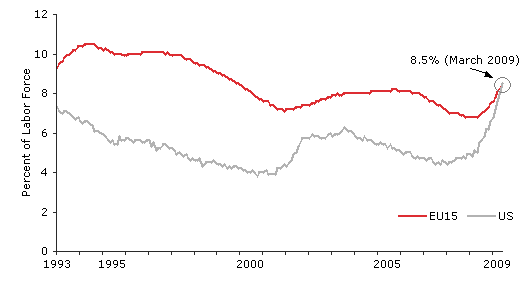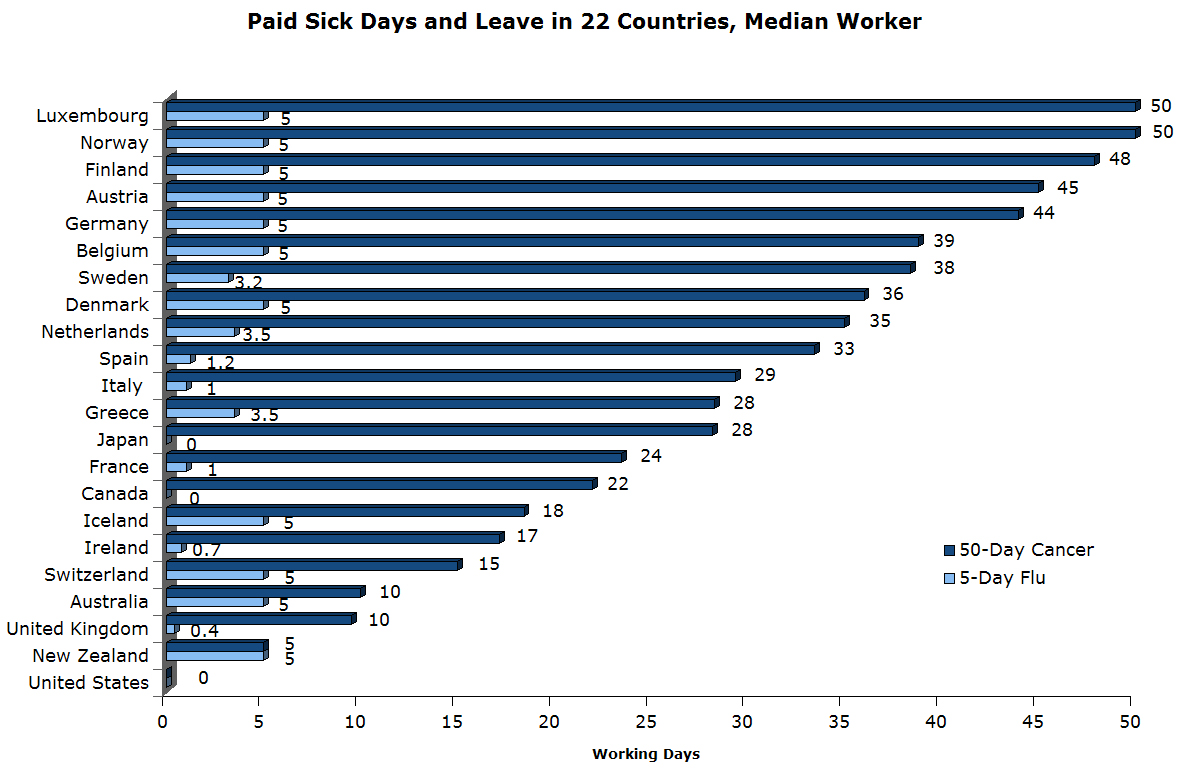Archive: May 2009
US Unemployment Matches EU-15
May 20, 2009
Hye Jin Rho, Shawn Fremstad, and I have a new CEPR paper comparing unemployment rates across the 21 major OECD economies.
According to the most recent data from the OECD, the United States is now tied with Portugal for the fourth highest harmonized unemployment rate in the top OECD countries.
And, according to the most recent data from Eurostat, in March the US unemployment rate was as high as the rate in the European Union's first 15 member countries (EU-15). March was the first time in the period for which Eurostat publishes data that the US unemployment rate was as high as the EU-15 rate.

Brad DeLong had a nice post on the piece. So did The Atlantic, but the comments section sure seemed to be unhappy with the report.
UPDATE 05/22/09: Today's New York Times online (and tomorrow's print edition) has a great story, by Floyd Norris, based on our paper. The accompanying graphic is excellent.
Contagion Nation
May 19, 2009
CEPR released a new report yesterday comparing paid-sick-day and paid-sick-leave policies in 22 rich countries, including the United States.
The report, written by Dr. Jody Heymann, CEPR's Hye Jin Rho, Alison Earle, and myself, finds that the United States is the only country in the sample of affluent countries that provides no short-term paid sick days or longer-term paid sick leave.
To make comparisons of complicated policies easier across the 22 countries, we looked at a typical worker in each of two situations: the first, where a worker must miss five days of work (the flu, for example); the second, where a worker must miss 50 days of work (say, while receiving cancer treatment).
The figure below summarizes the main results. In each case, the typical worker's entitlement is expressed as a share of their total five- or 50-day earnings that would be replaced by employers or by the national social insurance system. The United States is the only country that guarantees nothing in both cases. (As we document in the report, the voluntary employer-provided plans in the United States leave tens of millions of workers without paid sick days. And, don't forget, employers in other countries also often do better than what their national law requires.)

The report got a nice write up in Ezra Klein's new blog at the Washington Post and at the Huffington Post. The New York Times also mentioned the report in a good story by Steve Greenhouse on Saturday.
Some New Papers
May 11, 2009
A few new papers out in the last several months. In March, "Is the U.S. Unemployment Rate Today Already as High as It Was in 1982?" (with Dean Baker) and, in April, "Unions and Upward Mobility for Service-Sector Workers."
Ben Zipperer and I have also updated our January 2007 "Dropping the Ax" report on illegal firings in union organizing elections.
Margaret A. Schmitt, December 25, 1940 - April 25, 2009
May 10, 2009
My mother, Margaret A. Schmitt, Peggy to her friends, Peggy Anne to her family, died on April 25, of lung cancer. The Philadelphia Inquirer ran a lovely obituary.